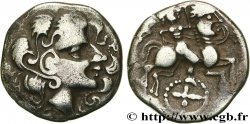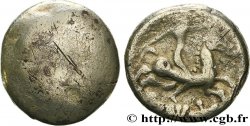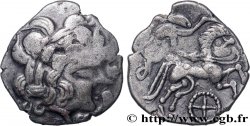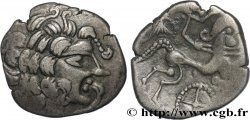bga_321376 - REDONES (Area of Rennes) Statère de billon, classe VII
Not available.
Item sold on our e-shop (2014)
Price : 950.00 €
Item sold on our e-shop (2014)
Price : 950.00 €
Type : Statère de billon, classe VII
Date: c. 80-50 AC.
Metal : billon
Diameter : 22 mm
Orientation dies : 2 h.
Weight : 5,93 g.
Rarity : R1
Coments on the condition:
Statère frappé sur un flan large et régulier. Portrait complet et bien centré. Droit de frappe un peu molle, mais superbe revers de frappe vigoureuse avec une belle patine irisée
Catalogue references :
Predigree :
Cet exemplaire provient du trésor d’Amanlis, numéroté 166 en noir, 5 au droit et 14 au revers à l’encre rouge
Obverse
Obverse legend : ANÉPIGRAPHE.
Obverse description : Tête laurée à droite, la chevelure abondante ; une volute devant la bouche.
Reverse
Reverse legend : ANÉPIGRAPHE.
Reverse description : Cheval androcéphale conduit à droite par un aurige, tenant les rênes et le fouet ; devant le poitrail, une tête coupée à droite ; entre les pattes, rouelle perlée à huit rayons avec moyeu central.
Commentary
Ce statère présente un droit et un revers d'une qualité exceptionnelle, avec l'androcéphale, une partie de l'aurige , une très belle rouelle bien nette et surtout devant le poitrail, une tête coupée particulièrement complète.
. Le coup de burin est interprété comme un signe de démonétisation ou comme une marque pour tester la nature interne du métal.
. Le coup de burin est interprété comme un signe de démonétisation ou comme une marque pour tester la nature interne du métal.







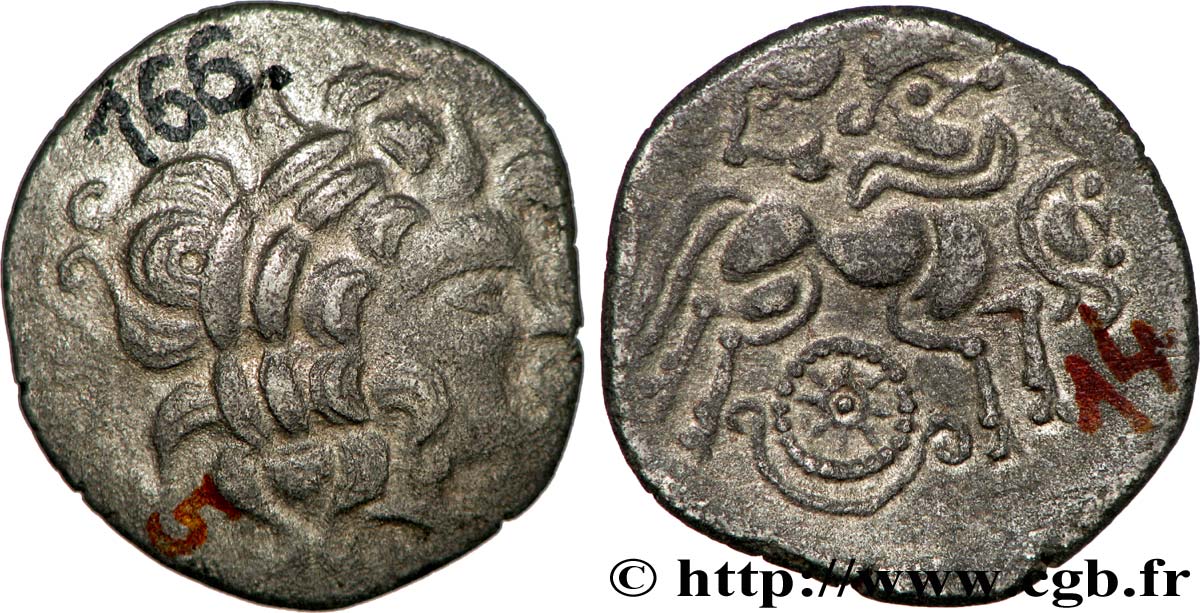
 Report a mistake
Report a mistake Print the page
Print the page Share my selection
Share my selection Ask a question
Ask a question Consign / sell
Consign / sell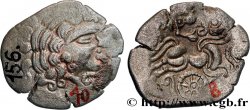
 Full data
Full data
